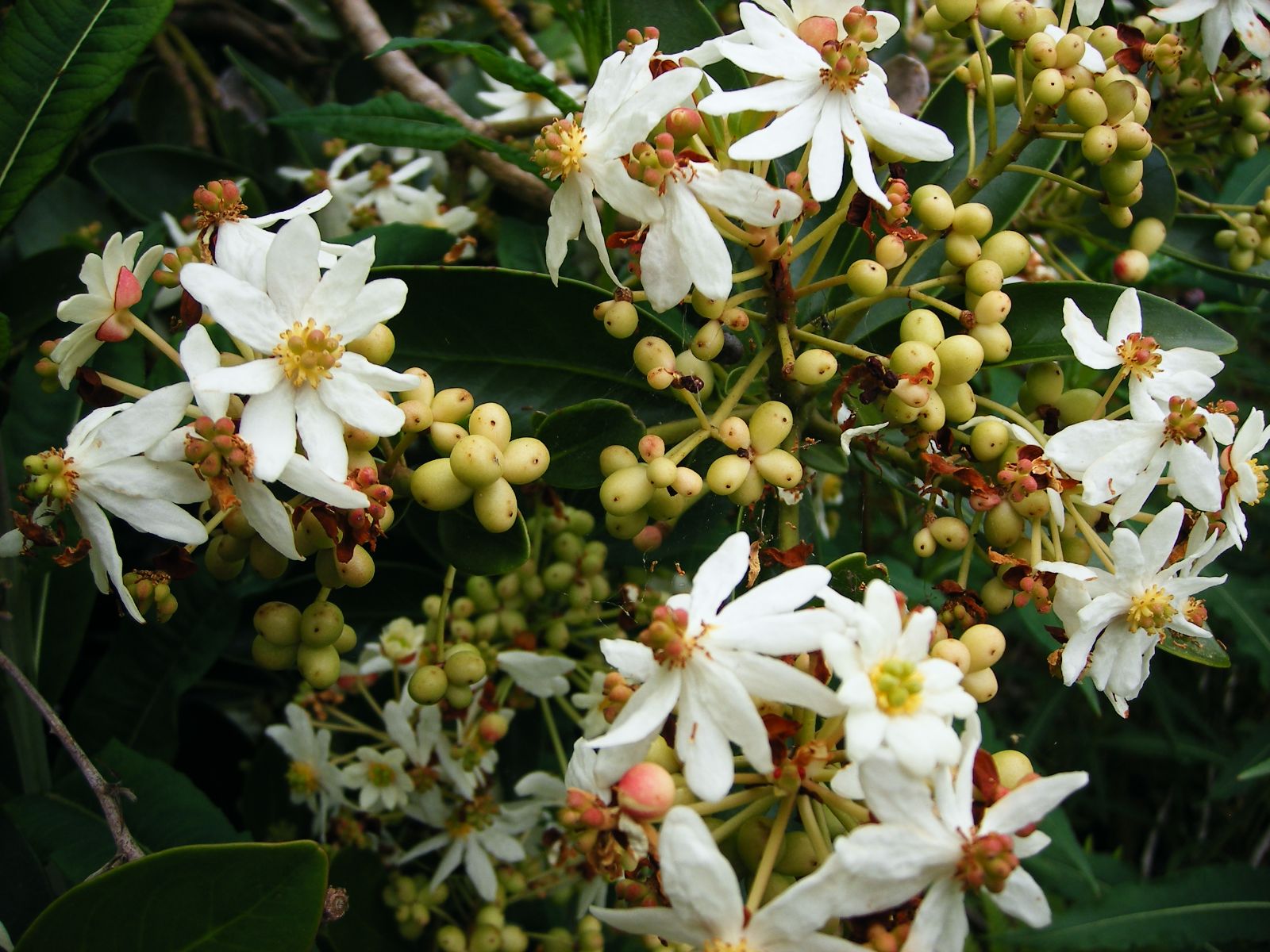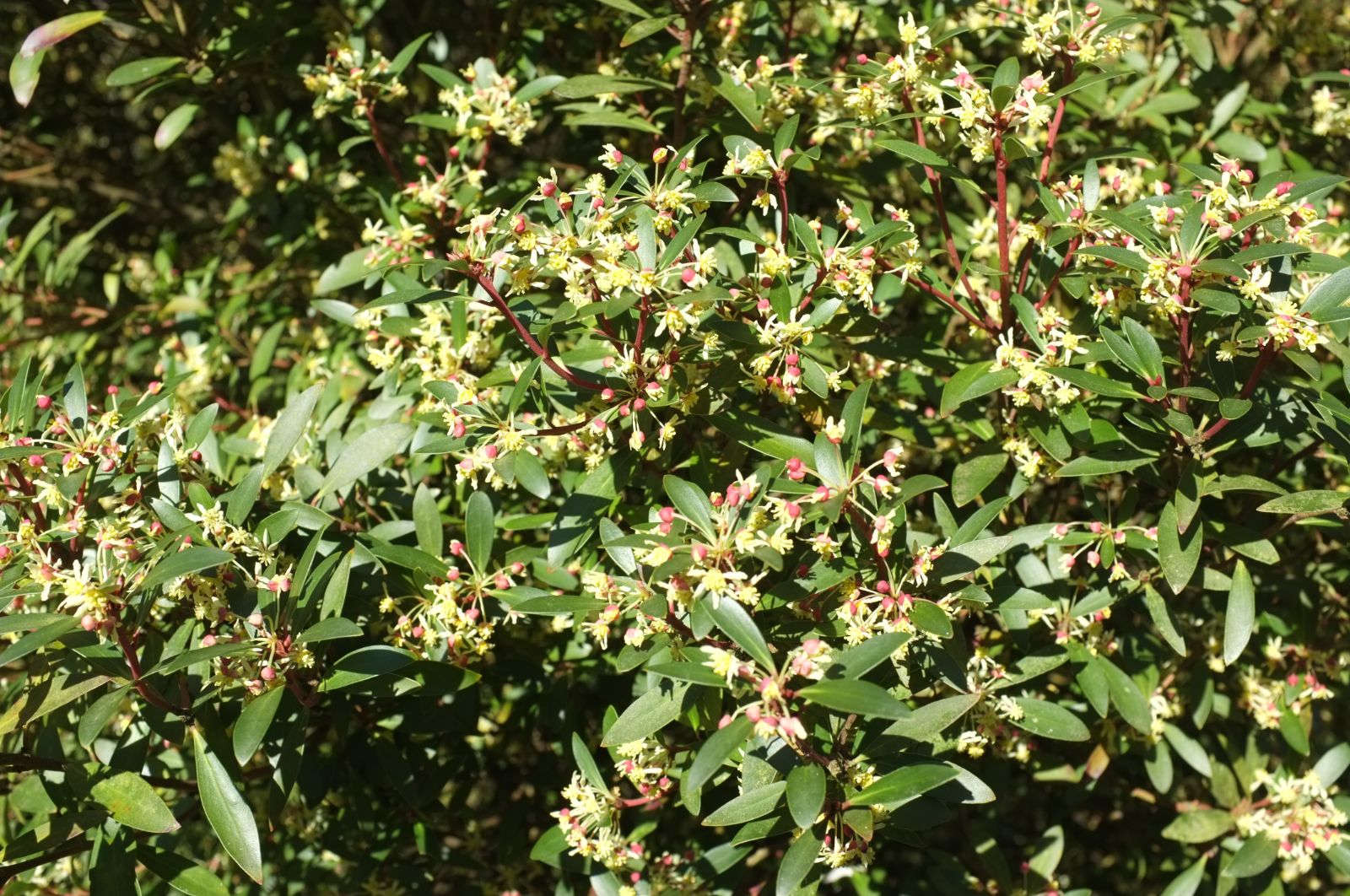Pseudowintera colorata
Credits
Article from Bean's Trees and Shrubs Hardy in the British Isles
Recommended citation
'Pseudowintera colorata' from the website Trees and Shrubs Online (treesandshrubsonline.
Genus
Synonyms
- Drimys colorata Raoul
- D. axillaris var. colorata (Raoul) Kirk
An evergreen glabrous shrub usually not more than 6 ft high in the wild and so far much smaller in cultivation, with an almost black bark. Leaves leathery, 3⁄4 to 21⁄2 in. long, 3⁄8 to 11⁄8 in. wide, elliptic to broadly so, or sometimes broadest above the middle, dull yellowish green above, blotched or margined with red or reddish purple, glaucous beneath. Flowers small, axillary, in clusters of two to four (sometimes more), each on a stalk about 3⁄8 in. long. Calyx cup-shaped, entire or shallowly lobed. Petals yellowish green, about 3⁄16 in. long. Carpels up to five in number, but only one or two maturing. Fruits black or dark red, about 3⁄16 in. across, with two or three seeds.
Native of New Zealand, mainly in the South Island and Stewart Island. It is sometimes cultivated in the milder parts of the country for the curious variegation of its foliage, which gives it the appearance of a garden variety, though it is in fact a feature of all the wild plants. It is closely related to the following and sometimes treated as a variety of it:
P axillaris (J. R. & G. Forst.) Dandy
Synonyms
Drimys axillaris J. R. & G. Forst


